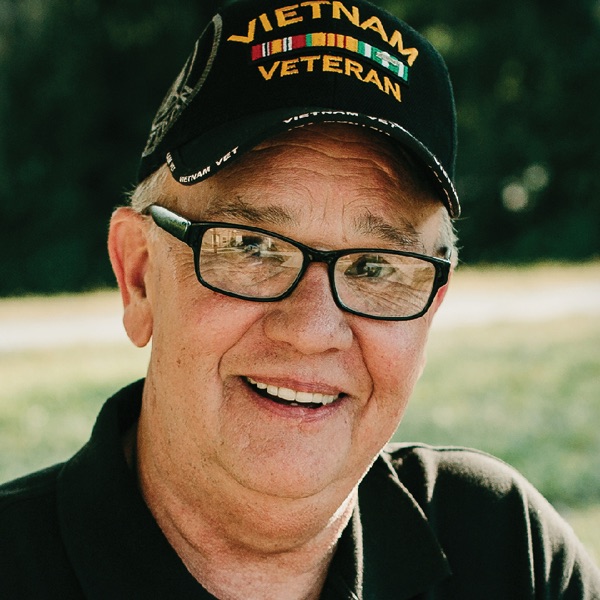
Our Story
Serving veterans Since 1992
All it took to motivate a Columbia group of Vietnam veterans to action was for one of their brothers-in-arms to die alone on the streets. They refused to accept veteran homelessness, invested their own money, opened a shelter, and Welcome Home was born. They didn’t accept veteran homelessness then. We cannot accept it today.
In the years since its establishment, Welcome Home has evolved from simply a shelter into a transitional living facility committed to providing emergency food and clothing, a clean and stable living environment, case management and advocacy to disadvantaged and displaced veterans.
Our organization is based on the belief that no veteran who has served our country should be without a place to call home. Just as Soldiers commit to leave no one behind on the battlefield, we commit to leave no veteran behind to sleep on the streets.

Watch our short film “The Journey Home,” a story about the powerful bond that exists between all veterans.
With Terry Roberts, USMC Veteran
Understanding the issues
Who are homeless veterans?
The U.S. Department of Veterans Affairs (VA) states that the nation’s homeless veterans are predominantly male, with roughly 9% being female. The majority are single; live in urban areas; and suffer from mental illness, alcohol and/or substance abuse, or co-occurring disorders. About 11% of the adult homeless population are veterans.
Roughly 45% of all homeless veterans are African American or Hispanic, despite only accounting for 10.4% and 3.4% of the U.S. veteran population, respectively.
Homeless veterans are younger on average than the total veteran population. Approximately 9% are between the ages of 18 and 30, and 41% are between the ages of 31 and 50. Conversely, only 5% of all veterans are between the ages of 18 and 30, and less than 23% are between 31 and 50.
America’s homeless veterans have served in World War II, the Korean War, Cold War, Vietnam War, Grenada, Panama, Lebanon, Persian Gulf War, Afghanistan and Iraq (OEF/OIF), and the military’s anti-drug cultivation efforts in South America. Nearly half of homeless veterans served during the Vietnam era. Two-thirds served our country for at least three years, and one-third were stationed in a war zone.
About 1.4 million other veterans, meanwhile, are considered at risk of homelessness due to poverty, lack of support networks, and dismal living conditions in overcrowded or substandard housing.
How many veterans are homeless?
Although flawless counts are impossible to come by – the transient nature of homeless populations presents a major difficulty – the U.S. Department of Veterans Affairs states that 35,574 veterans were homeless on any given night during the Point-In-Time Count in 2023.
Approximately 12,700 veterans of Operation Enduring Freedom (OEF), Operation Iraqi Freedom (OIF) and Operation New Dawn (OND) were homeless in 2010. The number of young homeless veterans is increasing, but only constitutes 8.8% of the overall homeless veteran population.
In Missouri, there were 569 homeless veterans in 2023.
Why are veterans homeless?
Veterans are homeless due to a complex set of factors such as mental and physical disabilities, severe shortages in affordable housing and supportive services, and high unemployment. A large number of displaced and at-risk veterans live with the lingering effects of trauma, compounded by a lack of family and social support networks.
What are the biggest challenges for homeless veterans?
Aside from adequate shelter, some of the biggest challenges homeless veterans face:
- Disability – Most veterans staying at Welcome Home are applying for VA and/or Social Security disability compensation and have very limited financial resources to meet their basic needs until a determination can be made. This process is often lengthy and can take as long as two years. Often veterans become homeless because they are unable to work and they have no income until a decision on compensation has been made.
- Employment – Many employers are afraid to hire homeless people, and many are unable to accommodate a modified work load or schedule that someone with a mental or physical disability may require. The current economic situation makes the challenge of finding work even more difficult.
- Transportation – Sometimes the bus isn’t an option for veterans who work early or late hours.
- Clothing – While there are a number of facilities that sell used clothing, often our veterans have so little money that they simply cannot afford to buy any clothing.
Does Welcome Home help veterans who are not homeless?
How can the community support the mission to end veteran homelessness?
569 veterans are homeless in the state of Missouri. Unacceptable in our eyes. Welcome Home is a non-profit organization taking action to end veteran homelessness.
But, we can’t do it alone!
With your support we are able to provide more than just shelter and services to veterans. We provide a secure and stable community veterans can call ‘home.’ Our community for veterans is well-equipped with the critical resources and professional staff necessary to offer both practical and emotional support to area veterans. Welcome Home builds community among our veterans, as well as with partners and advocates throughout the state of Missouri and nation.
With your generous gift you will help provide direct assistance to homeless and at-risk veterans, as well as their families. Will you help us honor veterans and restore their lives?
If you or your organization are interested in supporting our deserving heroes, please consider a tax-deductible donation today!
There are also many other ways that individuals and organizations can help. Please check out the “Get Involved” page or contact our office for more information.
